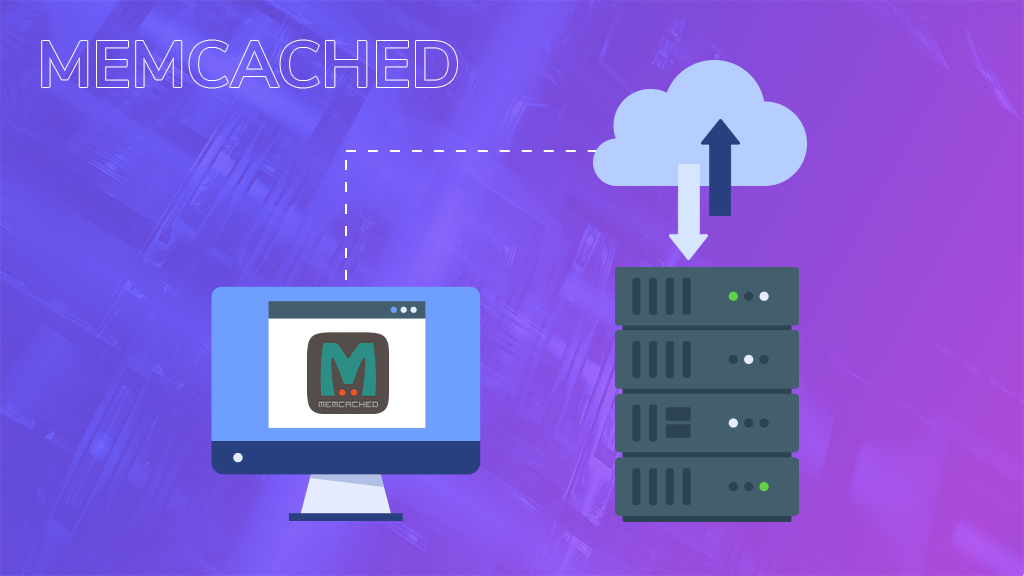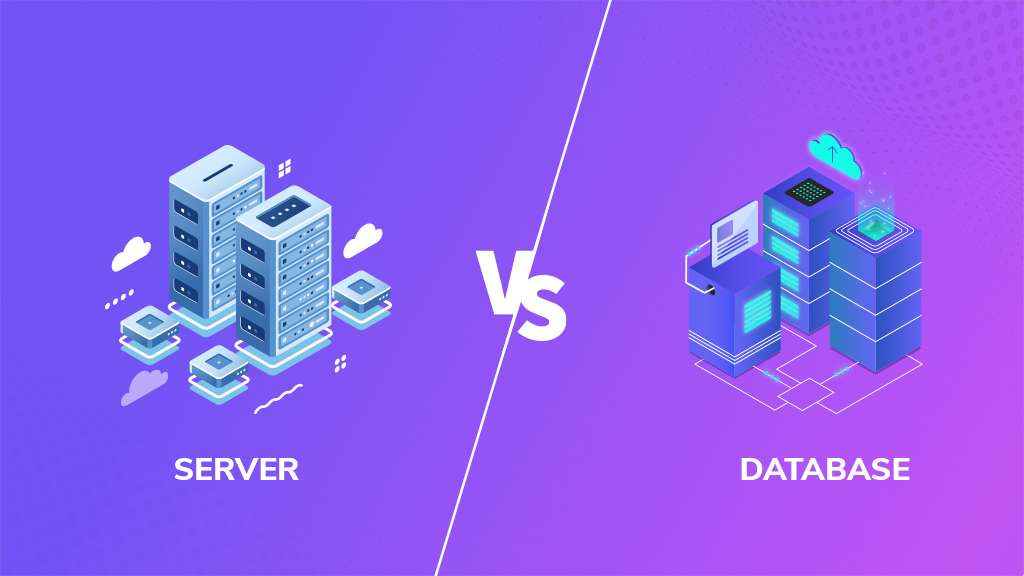
In the world of web development, where speed and responsiveness are essential, Memcached emerges as a revolutionary memory caching system. This blog unravels the mysteries of Memcached, answering the question, “What is Memcached?” We’ll delve into its importance for modern web applications, discovering its ability to enhance performance and optimize data access, making it an invaluable tool for developers seeking to improve their web creations.
What is Memcached a Memory Cache?
Memcached is a distributed memory object caching system, open-source, and high-performance. It’s often employed to accelerate dynamic, database-driven websites by storing data and objects in RAM, reducing the need to frequently access an external data source like a database or API. This efficiency stems from its ability to swiftly access data stored in the server’s RAM, making it an excellent option for applications requiring rapid retrieval of substantial data.
Understanding the Functionality of Memcached
1. Key-Value Storage
Memcached employs a key-value storage system, where data is saved in pairs consisting of a unique key and its associated value.
2. Client Request
When a client application requires specific data, it sends a request to Memcached, providing the corresponding key for that data.
3. Cache Check
Memcached then checks its cache to determine if the requested data is already stored within it.
4. Data Availability
If the data is found in the cache, Memcached promptly retrieves it and delivers it back to the client application.
5. Data Not Found
If the requested data is not present in the cache, Memcached explicitly proceeds to fetch it from the external data source, such as a database or API.
6. Caching Process
After retrieving the data from the external source, Memcached stores it in its cache for future requests, associating it with the provided key.
The Benefits of Using an In-Memory Cache
1. Enhanced Application Performance
Caching frequently accessed data in system memory can have a profound impact on application performance. It dramatically reduces the need for database queries when serving web pages or handling API requests. This optimization can result in a significant boost in application performance, particularly for applications heavily reliant on database-driven content. By minimizing the latency associated with retrieving data from the database, user experiences are improved as pages load faster and with greater responsiveness.
2. Scalability
Moreover, Memcached is purposefully designed to excel in terms of scalability, making it exceptionally well-suited for deployment in large-scale web applications that experience substantial traffic loads. Memcached can surely be strategically distributed across multiple servers, ensuring efficient data caching and maintaining consistent performance, even in the face of heavy traffic demands. The ability to scale horizontally indeed allows web applications to seamlessly accommodate growing workloads without encountering performance bottlenecks.
3. Reduced Database Load
One of the primary advantages of Memcached lies in its capacity to alleviate the load on the database server. Through the caching of frequently accessed data in memory, Memcached curtails the number of queries directed at the database. This not only results in marked improvements in the performance and scalability of the database server but also extends the lifespan of hardware by reducing its operational burden. Reduced load on the database server translates to cost savings, as it diminishes the need for frequent upgrades and maintenance.
4. Distributed Caching
It also employs a distributed architecture that allows for the storage of cached data across multiple servers. This approach delivers several advantages, including redundancy and fault tolerance. It also enhances performance by enabling data to be cached in closer proximity to the application server. This geographical proximity can significantly reduce latency and enhance response times, particularly for applications that cater to a global audience. The distributed nature of Memcached ensures that even in the face of server failures, cached data remains accessible, maintaining consistent application performance.
5. Cost Reduction
Thus it proves cost-effective in the operation of web applications. By alleviating the database server’s load and reducing the need for expensive hardware, it helps in cost reduction. This translates to lower infrastructure and operational expenses. Consequently, organizations can optimize their budget allocation and make more efficient use of resources.
6. Security Improvement
Moreover, it plays a part in bolstering the security of web applications. By reducing the attack surface of the primary database, it helps mitigate potential security vulnerabilities. When sensitive data is not frequently accessed directly from the database, it becomes less susceptible to unauthorized access and cyberattacks. In other words, this proactive security measure ensures data integrity and safeguards the confidentiality of user information, promoting trust and compliance with data protection regulations.
7. Developer-Friendly API
It indeed offers a straightforward yet robust application programming interface (API) that facilitates the storage and retrieval of data from the cache. The API’s structure is based on key-value pairs, where keys are represented as strings, and values can encompass a wide range of serializable objects. This versatile approach simplifies the caching of diverse data types, encompassing database query results, responses from external APIs, static content, user session information, and a multitude of other data categories.
The following is an example of how to store and retrieve data using the Memcached Python client:
import memcache
# Connect to Memcached Server
mc = memcache.Client(['localhost:11211'])
# Store a Value in the Cache
mc.set('my_key', 'my_value')
# Retrieve a Value From the Cache
result = mc.get('my_key')
print(result) # Output: 'my_value'Core Features of Memcached
1. In-Memory Data Storage
This Memory cache adopts an in-memory data storage approach, where data is stored in system memory rather than on disk. This distinctive feature results in lightning-fast data access and retrieval, making it a prime choice for caching frequently accessed data. Data categories such as database query results, responses from external APIs, and static content can be seamlessly cached in memory, ensuring rapid access times and responsiveness.
2. Distributed Architecture
Memcached memory cache is meticulously engineered for deployment across multiple servers. This distributed architecture likewise introduces scalability and high availability into the system. Hence Administrators can conveniently incorporate new servers into the cluster as the need arises. Furthermore, in the unfortunate event of server failure, the remaining servers in the cluster can continue to seamlessly serve incoming requests, ensuring uninterrupted service.
3. Cache Expiration and Eviction
Memcached surely features automated cache expiration mechanisms, permitting data to be automatically purged from the cache after a specified time frame. This ensures that the cache remains up to date, preventing the use of outdated or stale data. Additionally, utilizing an eviction algorithm helps to manage the cache when it approaches full capacity. This algorithm also prioritizes the retention of recently accessed data, promoting cache efficiency.
4. Multi-Language Support
Overall Memcached is equipped with official clients and libraries tailored for a variety of programming languages. These languages include PHP, Python, Ruby, Java, and C#, providing a versatile caching solution compatible with a broad spectrum of development environments. This language diversity makes memcached an attractive choice for development teams working in various technology stacks.
5. High Performance and Scalability
Designed to accommodate high-traffic websites and applications, Memcached’s core strength lies in its in-memory caching architecture and distributed framework. These attributes empower it to effectively manage substantial volumes of data and requests without experiencing discernible performance degradation. Moreover, it offers horizontal scalability, allowing additional servers to be introduced into the cluster to further enhance performance and data handling capacity.
6. Simplicity
Altogether Memcached is renowned for its simplicity and lightweight nature in comparison to other caching solutions. It boasts a minimal memory footprint and dispenses with the need for intricate configurations or laborious installations. This straightforward approach makes it an appealing choice for developers seeking an agile, user-friendly caching system . Such ease of use and swift implementation complement its impressive performance capabilities.
Use Cases to Improve Your Web Application
1. Use Memcached Web Page Caching
One of the prominent use cases of Memcached lies in web page caching. By leveraging Memcached, organizations can significantly enhance the performance of their web applications. This is achieved by reducing the necessity for repeated and resource-intensive database queries. For instance, a web server can employ Memcached to cache the HTML code of frequently accessed web pages. In doing so, it pre-generates the HTML content, enabling rapid responses to user requests. This approach not only minimizes the load on the database server but also streamlines the delivery of web pages, ensuring a seamless and responsive user experience.
$cache = new Memcached();
$cache->addServer('localhost', 11211);
$key = 'my-web-page';
$html = $cache->get($key);
if (!$html) {
// Generate the HTML for the page here
$html = generate_html();
// Cache the HTML for future requests
$cache->set($key, $html, 3600); // Expire after 1 hour
}
echo $html;2. Session Data Storage
Memcached also serves as an effective solution for storing session data, particularly for web applications that rely on session management. To illustrate, web servers can employ Memcached to retain session data for logged-in users. This ensures swift data retrieval during subsequent user requests without the need for recurring database queries. By storing session data in Memcached, web applications can optimize the scalability and performance of their session management, supporting the simultaneous operation of numerous users while preserving responsiveness.
const memcached = require('memcached');
const client = new memcached('localhost:11211');
app.use(session({
secret: 'my-secret-key',
resave: false,
saveUninitialized: true,
cookie: {
secure: true
},
store: {
get: function(sid, cb) {
client.get(sid, cb);
},
set: function(sid, session, cb) {
client.set(sid, session, 3600, cb); // Expire after 1 hour
},
destroy: function(sid, cb) {
client.del(sid, cb);
}
}
}));3. Database Query Acceleration
Another valuable use case for Memcached is the acceleration of database queries through result caching. Web applications can indeed employ Memcached to store and manage the results of frequently executed database queries. By doing so, the application can promptly furnish users with the cached query results, eliminating the need for repetitive execution of the same queries. This approach not only reduces the response time for users but also enhances the overall efficiency and performance of the application.
import memcache
import MySQLdb
# Connect to Memcached
cache = memcache.Client(['localhost:11211'])
# Connect to MySQL
db = MySQLdb.connect(host='localhost', user='myuser', passwd='mypassword', db='mydb')
cursor = db.cursor()
# Execute the Query
query = "SELECT * FROM mytable WHERE column = %s"
params = ('myvalue',)
key = 'my-cached-result'
result = cache.get(key)
if not result:
cursor.execute(query, params)
result = cursor.fetchall()
# Cache the Result for Future Requests
cache.set(key, result, 3600) # Expire after 1 hour
# Use the Cached Result
for row in result:
print(row)4. Installation and Setup
To implement Memcached within your environment, you can follow these steps:
i. Installation
You can indeed install Memcached using your system’s package manager or choose to download a pre-compiled binary from the official Memcached website. This initial setup is essential to make Memcached accessible for your applications.
ii. Starting Memcached
After installation, initiate the Memcached daemon using the following command: memcached -d -m -p. This command launches Memcached and specifies parameters such as memory allocation and port configuration, allowing you to tailor its operation to your specific requirements.

5. Basic Commands and Data Types
It adheres to a straightforward key-value store data model. To interact with Memcached, utilize the following fundamental commands:
- set
This command especially facilitates the storage of key-value pairs within Memcached, allowing data to be cached.
- get
Retrieving data from Memcached using its corresponding key is achieved through the `get` command.
- delete
To remove specific key-value pairs from the cache, the `delete` command is employed.
- flush_all
This command clears the entirety of entries stored within Memcached, providing a means to reset the cache entirely.
In general, it extends support for an array of data types, encompassing strings, integers, booleans, arrays, and objects, which enables versatile data storage and retrieval.
/ Storing a string
memcached.set('name', 'Alex')// Storing an integer
memcached.set('age', 30)// Storing an array
memcached.set('fruits', ['mango', 'orange', 'peach'])// Storing an object
memcached.set('person', { name: 'Brain', age: 23 })6. Best Practices
Effective utilization of Memcached hinges on the following best practices:
i. Key Descriptiveness
Employ meaningful and descriptive keys to enhance data retrieval. A well-named key simplifies the process of locating specific data within the cache.
ii. Expiration Time
Assign reasonable expiration times to cached data to prevent the retention of stale or outdated information. This practice will surely that the cache remains up to date.
iii. Cache Efficiency
Avoid overwhelming the cache with extensive objects or data that are infrequently accessed. Concentrate on caching data so that it will genuinely enhance performance.
iv. Performance Monitoring
Continuously monitor these server metrics to optimize performance. By tracking key performance indicators, you can fine-tune your Memcached configuration for optimal results.
v. Language Support
In fact, it offers extensive language support, enabling integration with various programming languages. Popular languages, including Java, Python, Ruby, PHP, and Node.js, can seamlessly interface with Memcached servers. This flexibility allows developers to select the Memcached client library that is specific to their chosen programming language, streamlining interaction and integration.
const memcached = require('memcached')
const client = new memcached('localhost:11211')
client.set('name', 'Alex', 7, (err) => {
if (err) throw err
client.get('name', (err, value) => {
if (err) throw err
console.log(value)
// Output: Alex
})
})7. Integrating with Other Databases
Memcached’s utility extends beyond caching; it can also serve as a caching layer to enhance the performance of other databases. To effectively integrate Memcached with a database system, consider using a database-specific plugin or connector. These connectors are designed to facilitate the interaction between Memcached and a wide range of databases, promoting enhanced data access speed and overall system performance.
Conclusion
In summary, Memcached emerges as a robust and highly efficient distributed caching system, offering substantial enhancements to the performance of web applications. Its core methodology, caching frequently accessed data in system memory, exerts a considerable influence by alleviating the strain on databases and, consequently, fostering improved response times in applications.









